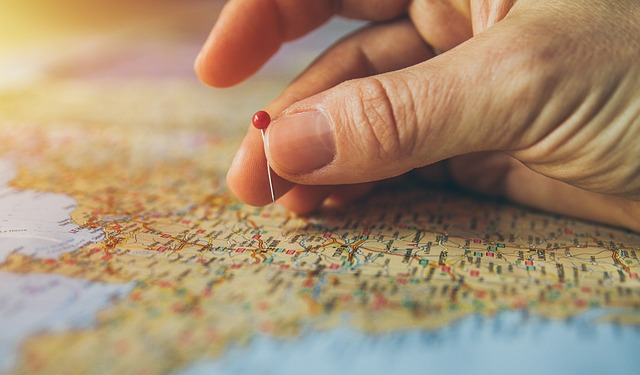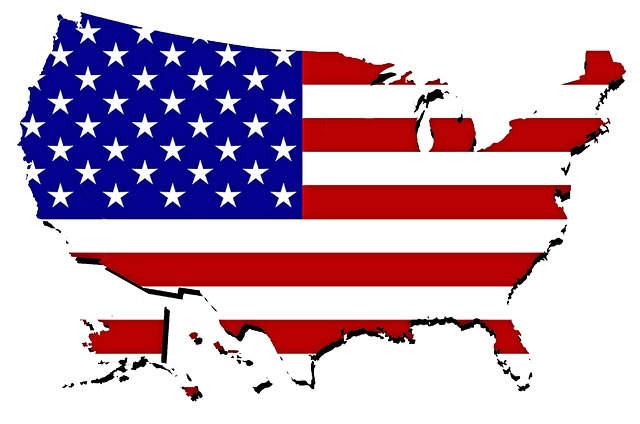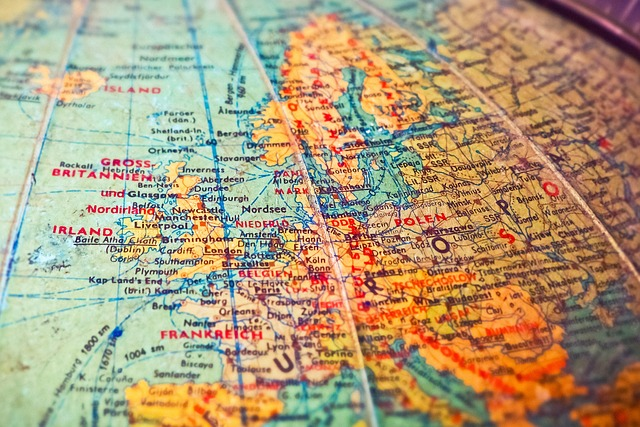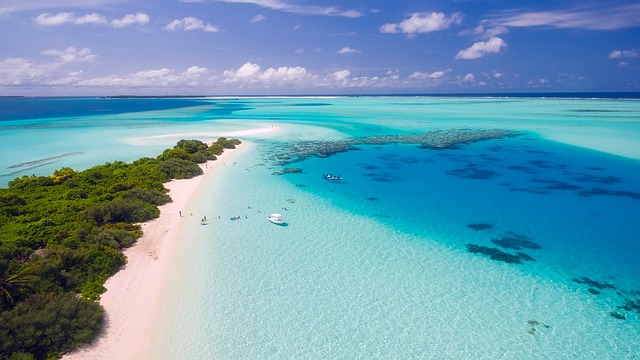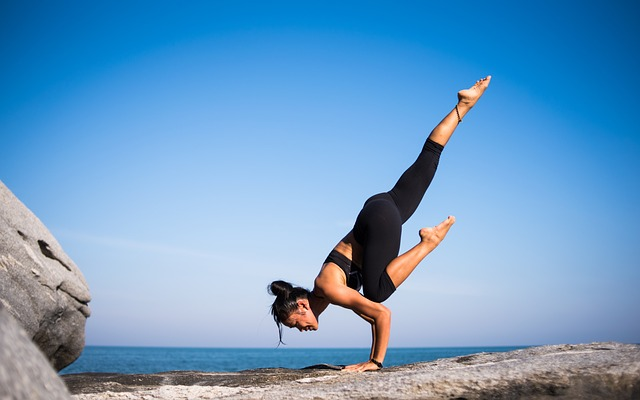Navigating Kayak Travel Restrictions: A Comprehensive Guide
Are you interested in learning about the Kayak travel restrictions but don’t know where to start? This comprehensive guide will provide you with all the pertinent information you need to navigate these regulations. From flight times, international travel regulations and baggage allowances to rates, loyalty programs, and insurance coverage, this article covers it all.
Learn how to save time and money while taking a safe and stress-free trip with our step by step guide to navigating Kayak travel restrictions. With topics ranging from flight safety guidelines to advanced booking system tools, no stone is left unturned in our efforts to make sure you have the best kayaking experience imaginable.
So what are you waiting for? dive into this comprehensive guide to get your travel plans underway!
Travel Restrictions Map
The mandatory quarantine for arriving airline crew members in Uganda is 14 days. All travelers must present proof of a negative COVID-19 test taken within 72 hours of their flight’s departure. The mask mandate has been lifted, but masks are still recommended in public spaces and on public transportation.
Do out-of-state travelers visiting California need to worry about a travel advisory? No – but some parks, recreation sites, and operating businesses may require proof of age, residence or other documentation.
What do you need to enter certain countries? Certificates of compliance! So make sure you check the entry requirements before your trip.
Route-specific alerts on KAYAK
Route-specific alerts on KAYAK give you the latest information about travel restrictions in different countries. Search on Kayak and get email alerts with advisories from authorities, including entry requirements, quarantine restrictions, and other important info.
In Martinique, marinas and small ports have posted safety protocols for visitors to follow – like social distancing, disinfecting hands and surfaces, and wearing face masks. And if airline crew are suspected of coronavirus infection? They’ll be isolated according to guidelines from the World Health Organization.
Explore more countries
KAYAK provides travelers with a comprehensive list of the travel restrictions in place for different countries – but what does that really mean? The United States is like a fortress, barring entry to citizens and permanent residents until May 15th. Canada has set up quarantine requirements like an invisible wall around its borders. Europe is more selective, allowing only certain categories of travelers through its gates. Latin American countries have implemented their own unique measures, such as mandatory quarantine and proof of negative COVID-19 tests taken within 72 hours before departure. Asia has opened its doors to select groups while Oceania requires travelers to check in regularly during self-isolation periods – so how do you know if you can travel safely?
United States
If you are planning to travel to the United States, do you know what entry requirements and travel restrictions are in place? All travelers must have a valid passport, visa or ESTA. Depending on your country of origin, additional documents may be required.
Safety protocols are also important for travelers visiting the US. To reduce the spread of COVID-19, social distancing is expected as well as wearing face masks and following any other safety guidance issued by the Centers for Disease Control and Prevention (CDC).
The capacity limits for public gatherings and businesses vary from state to state – some states have imposed limits while others haven’t. Mask mandates also differ between states – some require them while others don’t.
Finally, quarantine policies vary depending on which state you’re traveling to in the US. You may need to present a negative COVID-19 test result or proof of vaccination status upon entering the country and could be asked to quarantine upon arrival too!
Can I travel to the United States?
Travelers to the US – passport, visa, or ESTA? Depending on your country of origin, additional documents may be needed. For instance, those from the UK must obtain a visa before entering America. But what about capacity limits and mask mandates? Different states have different rules – some impose limits on public gatherings while others limit numbers in restaurants and other establishments. Some require masks, others don’t. And quarantine policies? Upon arrival to the US, you may need to present a negative COVID-19 test result or proof of vaccination status – plus you might be required to quarantine too!
Entry Requirements for the United States
Travelers to the US – passport, visa or ESTA? Depending on where you’re from, more documents may be needed. For example, UK travelers must get a visa before entering the US. But what else do you need to know? Well, some states have capacity limits for public gatherings and businesses while others require masks in certain places. The CDC also has guidance about physical distance and avoiding contact with people outside your household. Plus, county-level travel restrictions and state-specific advice can all be found on their website!
Canada
Canada is a popular destination, but what are the entry requirements for travelers entering during the pandemic? All travelers must provide documentation and a negative PCR test taken within 72 hours before boarding their flight. Plus, they must complete an ArriveCAN form with details about quarantine plan, travel history and contact information.
Upon arrival in Canada, all travelers except those with valid exemptions must quarantine for 14 days. During this period, they can’t leave unless seeking medical attention or have received an exemption from the government. They also need to wear face masks on public transport and follow social distancing regulations – plus pass a medical screening upon arrival which may include additional testing if necessary.
The Canadian government has imposed travel restrictions too: no non-essential trips including tourism, sightseeing, etc., however there are some exceptions such as cargo operators or humanitarian emergencies that require CAA authorization with appropriate documentation.
Are there travel restrictions in Canada?
Yes, the Canadian government has imposed travel restrictions for foreign nationals entering the country. All non-essential travel, including tourism, sightseeing, recreation, entertainment, social visits, and religious functions, is not permitted. Travelers must also possess a valid travel document and a medical certificate with negative COVID-19 test results issued within 72 hours before boarding their flight.
In addition, travelers may be subject to quarantine requirements upon arrival. All travelers, except those who have a valid exemption, must quarantine for 14 days upon arrival in Canada. During the quarantine period, travelers must stay in a quarantine facility, hotel, or residence, and are not allowed to leave unless they are seeking medical attention or have received an exemption from the government.
However, there are some exceptions to these restrictions. Cargo operators, humanitarian emergencies, and extreme scenarios with CAA authorization are exempt from the travel restrictions. In addition, medical staff and patients transferred in the interest of public health are also exempt.
Entry Requirements for Canada
All travelers entering Canada are required to provide documentation to enter the country. In addition to the documents required to enter the country, travelers may be subject to quarantine requirements upon arrival. The Canadian government has imposed a 14-day quarantine period for all travelers, except those who have a valid exemption.
The documents required for entry into Canada include a valid travel document and a medical certificate with negative COVID-19 test results issued within 72 hours before boarding their flight. Travelers must also complete an ArriveCAN form before entering Canada. This form includes details about the traveler’s quarantine plan, travel history, and contact information.
Travelers are also required to wear a face mask on all public transportation and must adhere to social distancing regulations. Travelers must also pass a medical screening upon arrival. They may be subject to additional testing, if deemed necessary.
The exceptions to the travel restrictions for Canada include cargo operators, humanitarian emergencies, and extreme scenarios with CAA authorization. In addition, medical staff and patients transferred in the interest of public health are also exempt from the travel restrictions.
Europe
Europe is a continent of wonders, with its diverse cultures, stunning sights and endless travel opportunities. It’s no surprise that it is a top destination for travelers from all over the world. But due to the COVID-19 pandemic, various countries in Europe have implemented travel restrictions to ensure safety for both visitors and citizens alike.
When planning your trip to Europe, you must be aware of each country’s individual regulations. Generally speaking, most require a negative COVID-19 test taken within 72 hours prior to arrival as well as self-isolation for at least 14 days upon entry. Some may also require you to register with their embassy before arriving or even restrict entry from certain countries altogether – so make sure you check! Additionally, some countries may ask you to submit a declaration of health when entering their borders.
So if you’re looking forward to exploring this amazing continent soon, remember: knowledge is power! Make sure you know what restrictions are in place before booking your journey – that way your travels will go smoothly and safely without any hiccups along the way!
What are the travel restrictions in Europe?
Travel restrictions in Europe – what do you need to know? It’s essential for travelers to be aware of the specific requirements of each country they plan to visit. For instance, if you’re heading to France, make sure you submit a declaration of health upon arrival. If Italy is your destination, fill out a self-declaration form. And don’t forget: Germany requires proof of a negative COVID-19 test taken within 72 hours prior to arrival!
Plus, many countries have restricted entry for visitors from certain nations and imposed restrictions on those who’ve passed through certain countries in the last 14 days. Belgium won’t let travelers in if they’ve been outside the EU recently; Denmark has similar rules but also applies them to non-EU/EEA countries. Lithuania needs visas or special permits while Hungary demands 14 days’ self-isolation after arriving.
And that’s not all: some places may require proof of onward travel (tickets or return flights) before allowing entry into their borders – Cyprus and Norway are two such examples.
So it pays off big time for travelers to check applicable travel restrictions before booking their trip – this way they can ensure their journey goes smoothly and without any complications!
Entry Requirements for European Countries
In addition to the general travel restrictions imposed by each country, what do travelers to Europe need to be aware of? Are there any specific entry requirements they must meet?
When it comes to entering European countries, you’ll need more than just a valid passport. Depending on where you’re going, you may have to obtain a visa or special permit prior to entry. For instance, Lithuania requires a visa or special permit while Hungary only needs a valid passport.
But that’s not all! Some countries may also require proof of onward travel – like tickets for your next destination or return flight – in order for them to let you in. Cyprus demands proof of onward travel and Norway requires evidence of a return flight.
Plus, some places might ask for proof of health insurance too – such as an up-to-date European Health Insurance Card (EHIC). France wants an EHIC and Italy needs adequate health insurance coverage.
And don’t forget about the COVID-19 tests! Certain countries will want evidence that you’ve had one within 72 hours before arriving at their borders; Germany is one example and Switzerland another (but with 48 hours instead). Finally, some nations could demand that travelers submit declarations of health upon arrival or quarantine for 14 days after getting there – France being one case and Czechia the other.
So if you’re planning on visiting Europe anytime soon, make sure you know the applicable entry requirements beforehand so your journey can go off without any hiccups!
Latin America
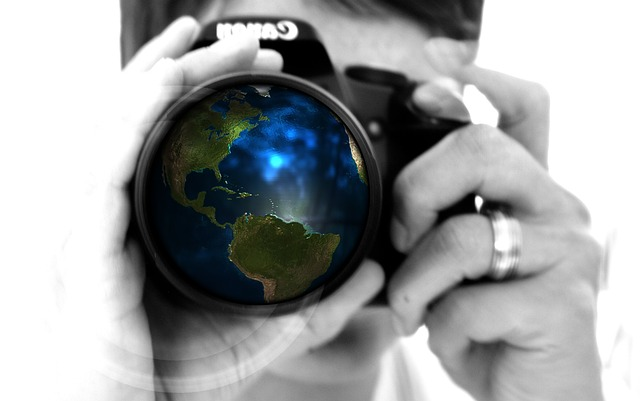
Travel restrictions in Latin America – what’s the deal? Well, it varies from country to country. Generally speaking, you’ll need a valid passport, proof of onward travel and sufficient funds to enter any Latin American nation. But there are exceptions – some countries allow essential and emergency flights while others have implemented an outright ban on all international flights. And if you’re allowed in, you may be subject to mandatory quarantine measures or require additional documents such as a medical certificate or negative COVID-19 PCR test result. Plus, don’t forget your passport must be valid for at least six months plus other documents like visas or tourist cards! So make sure you check with your destination’s Ministry of Foreign Affairs before jetting off!
What are the travel restrictions in Latin America?
Travel restrictions in Latin America – how strict are they? Well, it varies from country to country. Some have suspended all international flights except for repatriation ones, while others allow essential and emergency flights in. Plus, some countries require mandatory quarantine measures for those entering the country and travel bans for citizens of countries with confirmed cases of coronavirus (COVID-19).
To enter a Latin American nation, you’ll need a valid passport and proof of onward travel. You may also be asked to show sufficient funds, obtain a visa or tourist card, plus provide a medical certificate or negative COVID-19 PCR test result depending on the destination.
So what exceptions exist? It depends on the country, but generally speaking essential and emergency flights can still enter certain nations while other places have an outright ban on all international arrivals. Those who do make it through might face mandatory quarantine measures as well as needing additional documents such as a medical certificate or negative COVID-19 PCR test result before being allowed entry.
Entry Requirements for Latin American Countries
The entry requirements for Latin American countries can be confusing. But what do you need to know before traveling? This article will explain the documents and visas needed, health requirements, and exceptions to travel restrictions.
Passports and proof of onward travel are generally required for all travelers entering Latin American countries. Additionally, travelers may need to provide proof of sufficient funds or obtain a visa or tourist card depending on the country they’re visiting. Certain types of visas or permits such as emergency visas or medical visas may also be necessary for entry into some countries.
Health requirements vary from country to country, but usually include wearing face masks, carrying a medical certificate or negative COVID-19 PCR test result, and complying with mandatory quarantine measures if applicable. Some countries may require travelers to complete a health form prior to landing or get approval from their civil aviation authority for an international flight too!
Exceptions exist in certain Latin American countries – essential and emergency flights are still allowed in some while others have implemented an outright ban on all international flights. Those who are permitted entry may be subject to mandatory quarantine measures plus additional documents like a medical certificate or negative COVID-19 PCR test results might be needed too!
Asia
Asia is a vast continent, and with the pandemic raging on, what are the travel restrictions? Well, travelers should expect to provide proof of a negative COVID-19 test as well as additional documents such as visas, permits and health certificates.
China has suspended entry for most foreign nationals while the UAE requires a negative COVID-19 test taken within 72 hours of departure. South Korea also needs both a negative COVID-19 test and a completed health declaration form.
India requires 14 days of quarantine upon arrival, while Vietnam mandates 14 days of quarantine for all travelers. Thailand and the Philippines have implemented mandatory testing or self-isolation requirements too.
Taiwan has barred entry from China, Hong Kong and Macau; Singapore restricts those arriving from China or Hong Kong; Afghanistan has suspended all international flights; Japan only allows flights from certain countries like China, South Korea and Iran.
When planning your trip to Asia, make sure you check the entry requirements and travel restrictions for that country – plus stay up to date on the latest information – so you can enjoy a safe journey!
What are the travel restrictions in Asia?
The travel restrictions in Asia – what do they look like? Most countries require travelers to present a negative COVID-19 test taken within 72 hours of their departure. China, Hong Kong and Macau are among the countries that have suspended entry for travelers from certain countries.
The Philippines requires travelers to complete a Travel Declaration Form, while Malaysia requires a My Second Home (MM2H) permit prior to entering the country. Singapore demands travelers sign a Health Declaration Form and take a COVID-19 test upon arrival.
It’s essential to check up-to-date information before traveling anywhere in Asia if you want your trip to be safe and successful!
Entry Requirements for Asian Countries
Travelers to Asia – do you know what documents are needed to gain entry? Visas, permits and health certificates are all required. Unless you’re from the US or UK, you can skip the visa requirement when entering Japan or South Korea. Diplomats and members of international organizations don’t need visas for China or UAE, either. But if you’re headed to South Korea, an Alien Registration Card is a must-have; Malaysia requires a My Second Home (MM2H) permit; Thailand needs proof that you tested negative for COVID-19 within 72 hours prior to departure; Singapore demands a Certificate of Entry from a health facility. Whew!
But wait – there’s more! Certain categories of Indian nationals and residents have exemptions when entering India, while diplomats and personnel working for companies associated with drilling operations in Block No. 4 get special treatment in Lebanon too. So before your next trip to Asia, make sure to check out all the entry requirements and travel restrictions – it’ll be worth it for your safe and successful journey!
Oceania
Travelers to Oceania – what restrictions will they face? Each country in the region has its own set of travel requirements, so it’s essential to know what is needed before booking a trip. Passport, visa, health certificate and other documents are all must-haves for entry into Oceania. Plus, quarantine, health screenings and more may be required upon arrival.
But wait – are there any exceptions for humanitarian or emergency reasons? Some countries have limited allowances while others open their doors to travelers from certain countries or regions. To stay up to date with the latest information on entry requirements, travelers should check with their destination country’s embassy or consulate as these can change at any time.
What are the travel restrictions in Oceania?
As of June 2021, what are the travel restrictions in Oceania? Many countries in the region have closed their borders to non-residents and non-essential travelers. However, there are some exceptions for humanitarian and emergency reasons.
In the Cook Islands, nationals and permanent residents can enter without any restrictions. Those from other countries must present a valid visa and health certificate upon arrival. Additionally, those who have been in New Zealand or Australia within 14 days prior to entry don’t need any additional documents.
Samoa requires all visitors from abroad to obtain medical clearance before entering the country – except those coming from Australia or New Zealand. All travelers must also self-isolate for two weeks after arriving in Samoa.
Papua New Guinea has strict requirements for entry: you’ll need an approved exemption as well as a hotel reservation to purchase your ticket – plus you must depart from Brisbane (BNS), Cairns (CNS), or Singapore (SIN).
North Korea mandates that all visitors provide a valid passport and medical certificate when they arrive – plus they must self-isolate for 14 days upon arrival too! The Federated States of Micronesia require travelers to possess a valid passport, visa, and medical certificate issued by their home country before entering its borders. Saint Kitts & Nevis is currently not allowing any nonessential travel into its airports at this time. Barbados airline crew members should take extra precautions while staying overnight by self-isolating during their stay there. The Solomon Islands require that visitors get health clearance from an approved government facility along with presenting a valid passport on arrival too! Lastly, anyone transiting through New Zealand doesn’t need to worry about self-isolating, but everyone else does have to quarantine themselves for 14 days after landing there!
No matter where you’re traveling in Oceania right now, it’s important that you take all necessary precautions so that both you and others remain safe during your journey!
Entry Requirements for Oceanian Countries
The entry requirements for Oceanian countries – why is it important to know? Well, travelers must provide a valid passport, visa, health certificate and other documents upon arrival. Plus, there are exemptions from visa requirements in some countries such as the Cook Islands and Fiji. When traveling to North Korea, visitors need to plan their stay accordingly due to the 14 day self-isolation policy that is in place upon arrival. Passport and medical certificates from the country of origin are also required. In Barbados, airline crew must take all necessary precautions including self-isolating when staying overnight. To enter Solomon Islands you’ll need a health clearance from an approved government facility plus a valid passport. And finally, if you’re heading to New Zealand remember that travellers must self-isolate for 14 days with exception of those who are transiting through the country – so check with your destination’s embassy or consulate for latest information!
Summary
In today’s global pandemic, travel has become increasingly complex and restricted. Understanding the various travel restrictions imposed can be difficult. With the aim of helping travelers understand the peculiarities of navigation to their desired destinations, this comprehensive guide on kayak travel restrictions provides information on the entry requirements, safety protocols, quarantine policies, permit and visa requirements, health certificates, and other restrictions, at each destination country.
In addition, a Travel Restrictions Map is available to assist travelers, as well as route-specific alerts which provide real-time information on travel restrictions and safety protocols. As travelers consider all their options, it is essential that they stay informed of the latest changes with regards to travel regulations in different countries, as this will help ensure a smooth and stress-free travel experience.
Taking all the necessary precautions, we wish all travelers safe journeys!
Frequently Asked Questions
Does holland have travel restrictions?
The Netherlands has lifted its travel restrictions for visitors arriving from all countries in Europe, as well as several other countries outside Europe. All travelers will need valid travel documents such as a passport or identity card to enter the country.
Therefore, while there is no government-imposed travel restriction in place, travelers should still be prepared with the necessary documents.
Is there travel restriction to us?
The US has implemented travel restrictions requiring all travelers to be fully vaccinated with the primary series of an accepted COVID-19 vaccine before entering the country by plane. For more information, please see Requirement for Proof of COVID-19 Vaccination for Air Passengers.
Yes, there is a travel restriction to the US.
Is Tokyo open for travel?
Based on the latest information, it appears that Tokyo is open to travel. Visas became available again as of October 11, 2022, making journeys to Tokyo possible once again.

